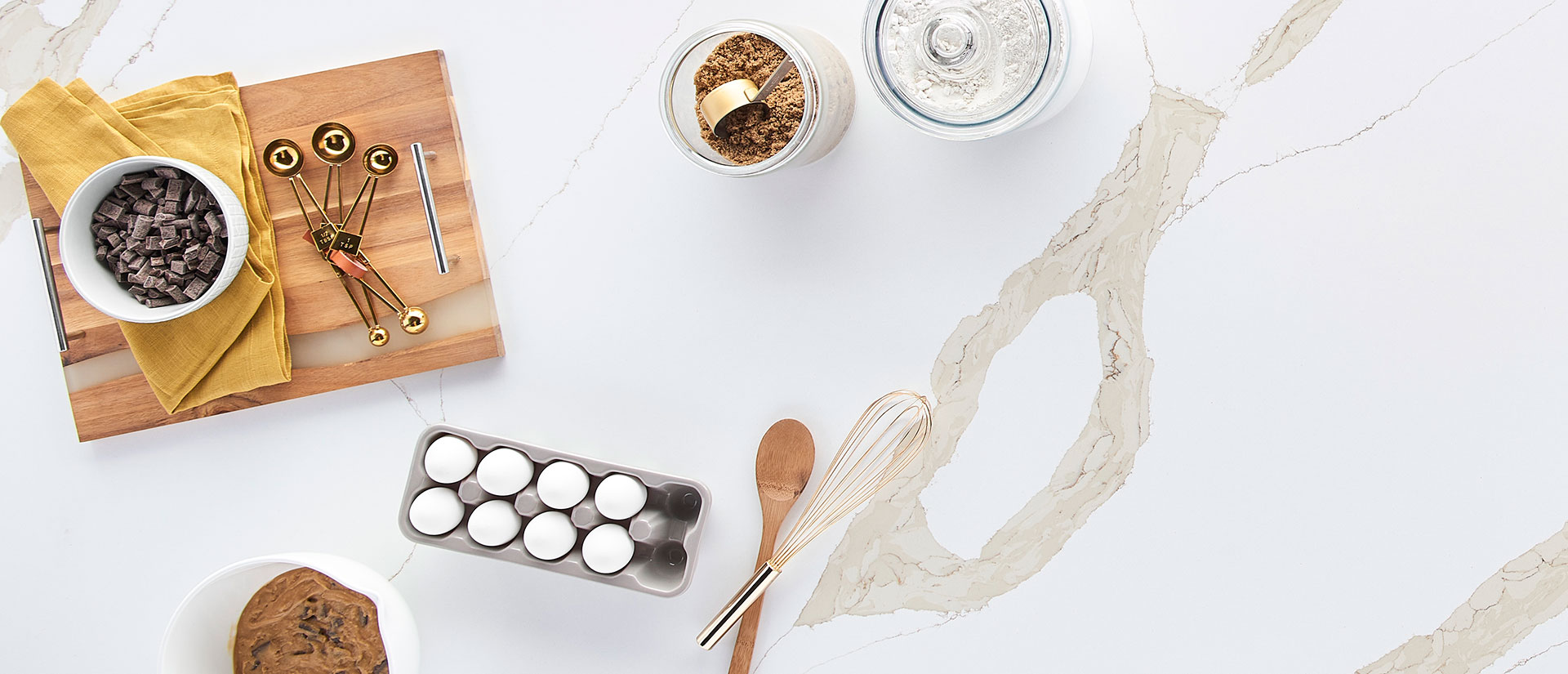Hello, homeowners! If you’re in the throes of choosing the perfect countertop, you may have come across the term “Calacatta Gold.” It’s a name that graces 3 distinct materials: Calacatta Gold Silestone, the American-made Calacatta Leon Gold Quartz, and the Italian Calacatta Gold Marble. Often interchanged, these three are as different as chalk and cheese. Let’s dive deep into their world, unraveling their characteristics, uses, and design possibilities.
Types of Calacatta Gold
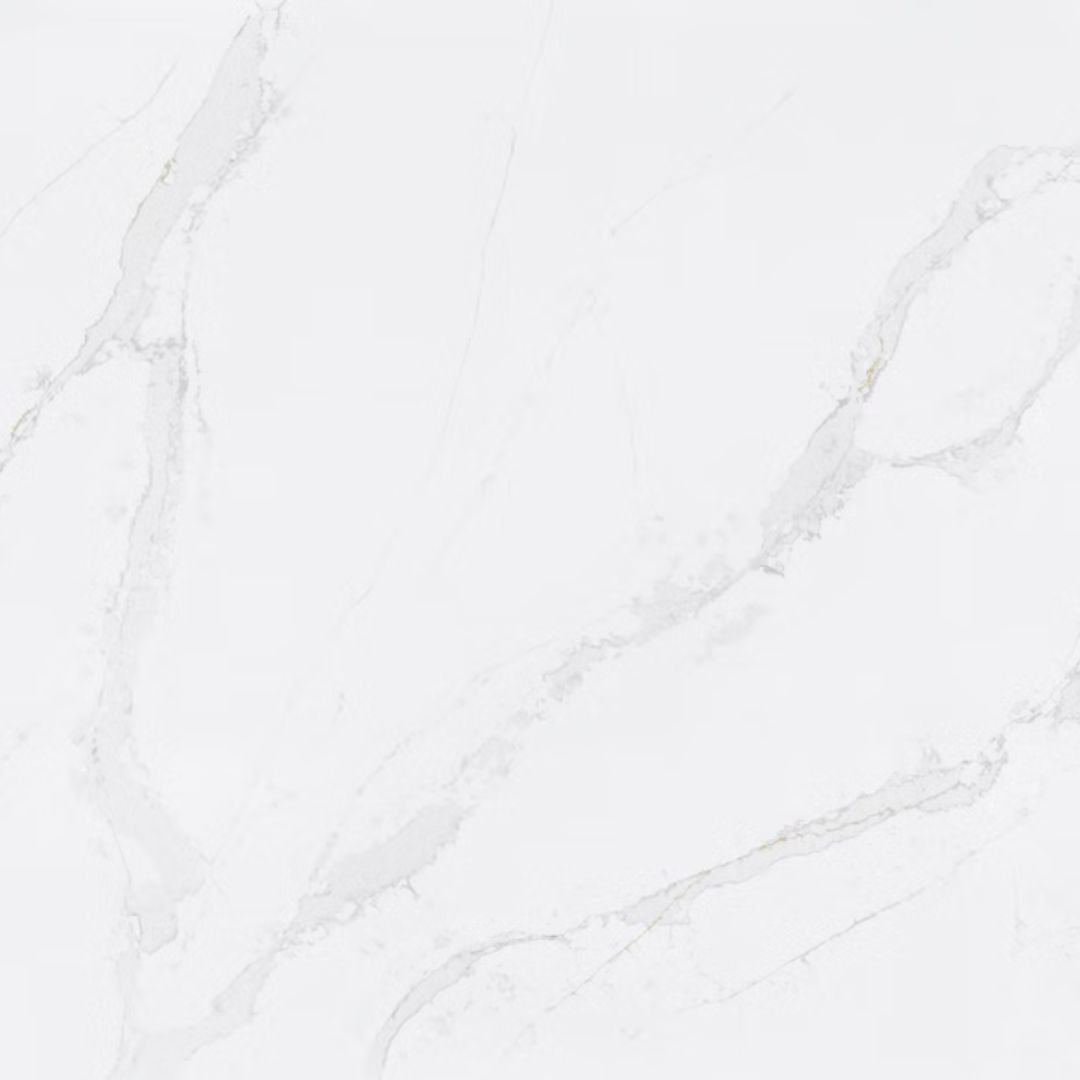
Cosentino /Calacatta Gold Silestone
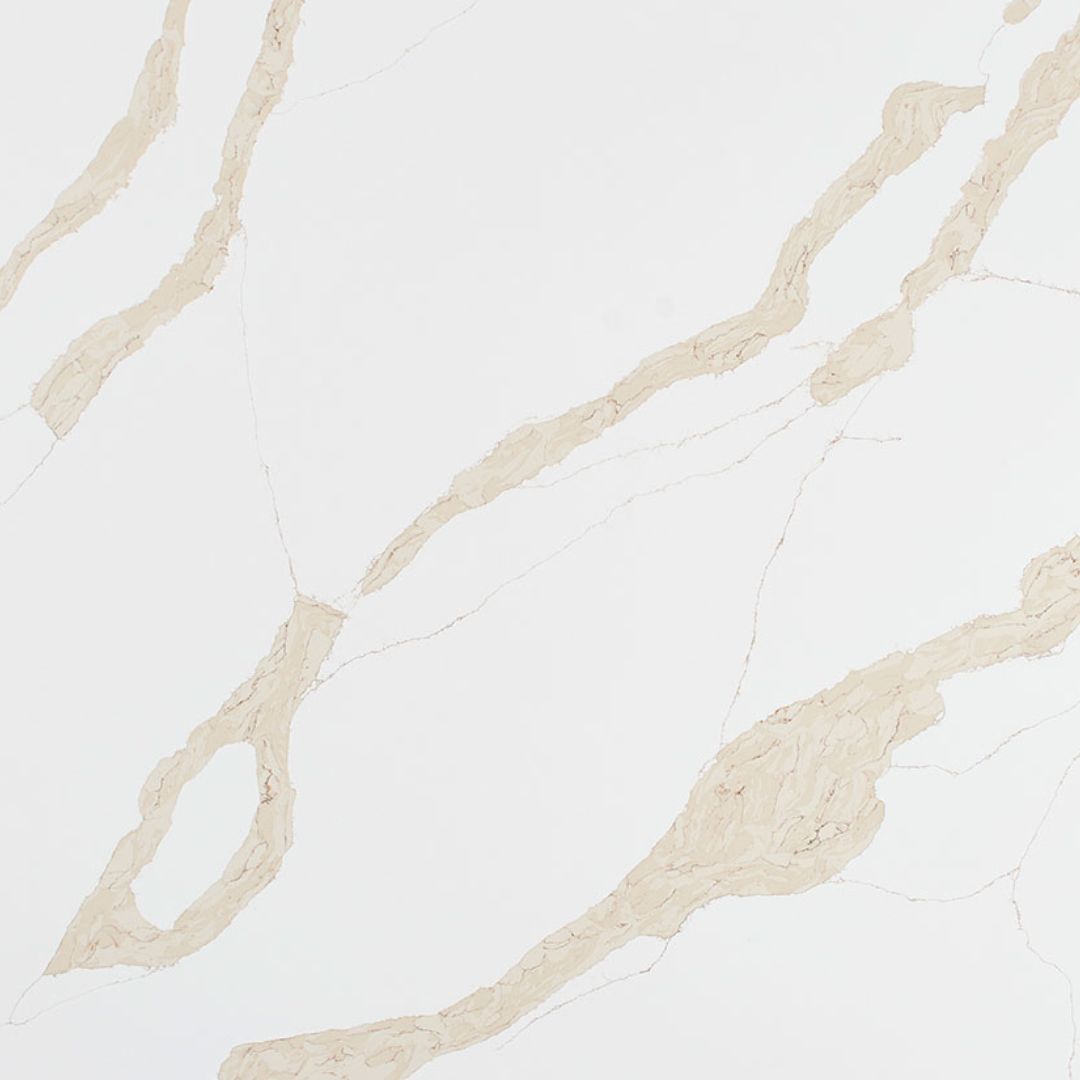
MSI /Calacatta Gold Quartz
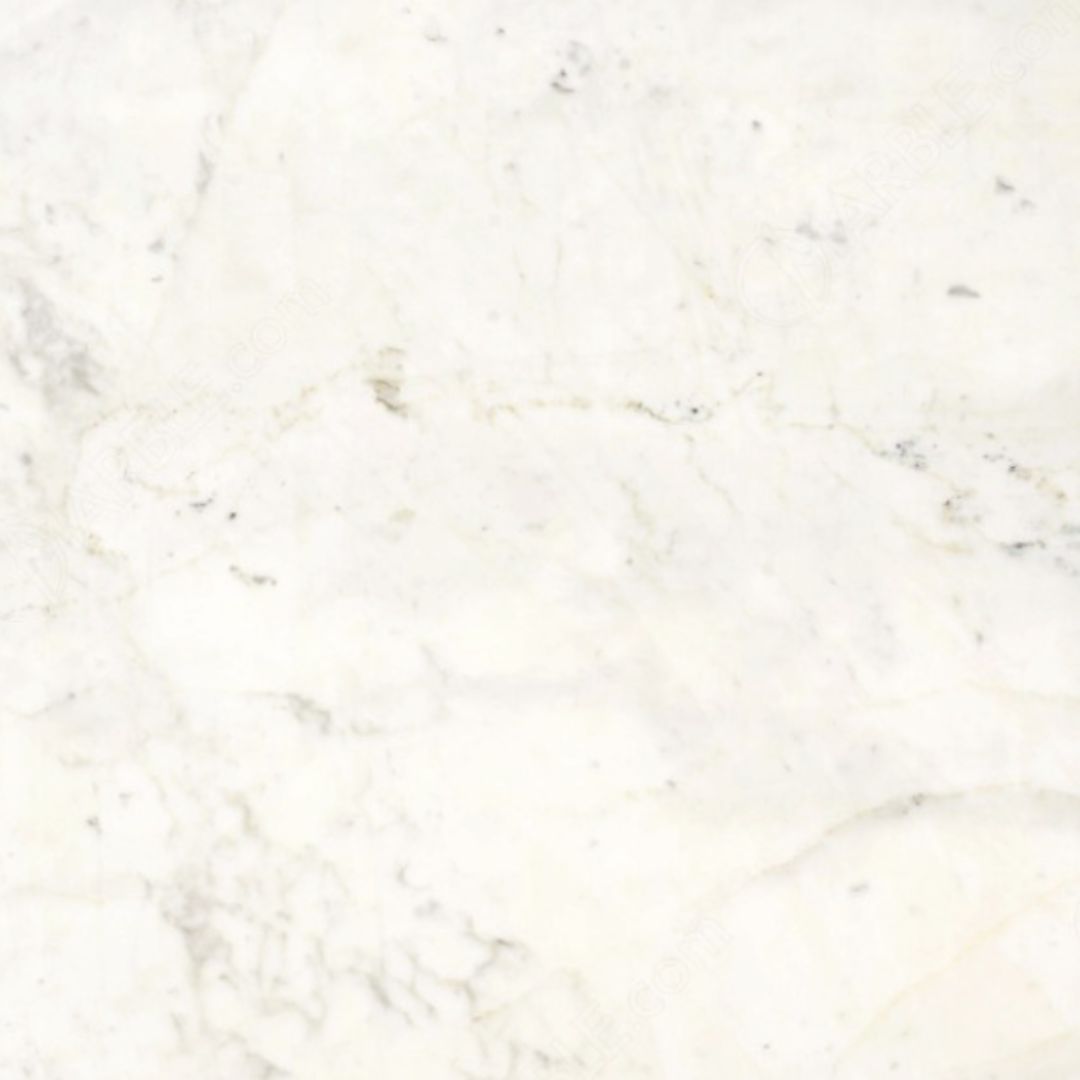
Calacatta Gold Marble
1. Calacatta Gold Silestone by Cosentino (Eternal Calacatta Gold Silestone Quartz):
Calacatta Gold Silestone, a creation by Cosentino, falls under the category of engineered stone or quartz. The Eternal Calacatta Gold Silestone Quartz, part of the Silestone brand, combines the beauty of Calacatta Gold Marble with the durability of quartz. This engineered surface boasts a radiant white background with elegant grey highlights and golden glints. Its non-porous nature makes it resistant to stains, scratches, and the need for regular sealing, offering both timeless elegance and practicality.
2. Calacatta Gold Quartz (Calacatta Leon Gold by MSI):
This stone, often marketed under names like Calacatta Leon Gold by MSI, is an engineered stone replicating the luxurious appearance of natural Calacatta Gold Marble. Composed mainly of quartz crystals, resins, and pigments, this quartz variant offers a durable and low-maintenance alternative to marble. It is renowned for its consistency in color and pattern, providing homeowners with the coveted Calacatta Gold aesthetic without the susceptibility to staining or scratching that can be associated with natural marble.
3. Calacatta Gold Marble:
Calacatta Gold Marble is a natural stone celebrated for its luxurious and timeless appeal. Mined from quarries, each slab of Calacatta Gold Marble is a unique masterpiece with its veining patterns, shades, and variations. While prized for its unparalleled beauty, marble requires more maintenance than quartz. It is porous and may stain, scratch, or etch over time. The choice of Calacatta Gold Marble is often driven by a preference for the distinctive characteristics only natural stone can provide.
These three types of Calacatta Gold—Quartz, Silestone (Engineered Quartz), and Marble—offer distinct advantages and considerations. The engineered quartz options prioritize durability, consistency, and low maintenance, while natural Calacatta Gold Marble emphasizes uniqueness and timeless beauty. Let’s dive into more details of these stones after exploring some core concepts about different types of stones.
Silestone vs Quartz: The Perfect Pairing
In countertops, the Silestone vs Quartz debate is more of a symbiotic relationship than a clash. Why? Because, in reality, there is no difference between Silestone and quartz countertops. Silestone is a distinguished brand, a brainchild of Cosentino, and it exclusively employs quartz as its natural stone material. On a broader scale, quartz, the naturally occurring mineral, is the common thread woven into the fabric of various countertop brands.
What is Silestone?
Silestone emerges as the choice du jour for those with a penchant for vibrant hues and bold aesthetics. As a flagship quartz brand under the umbrella of Cosentino, Silestone quartz stands out with its brilliant, solid colors, a characteristic that sets it apart in the competitive market. Crafted from natural quartz crystals, Silestone finds its versatile application in countertops, sinks, walls, and various home elements. Boasting lively shades like oranges, blues, greens, and reds, Silestone countertops depart from the conventional color palette other brands embrace. While visually akin to granite and marble, Silestone’s quartz crystals emanate a brighter glimmer, enhancing its visual appeal. Moreover, Silestone counters are fortified with protection against bacteria, color agents, and polyester resin, the binding force behind the seamless fusion of quartz crystals into a robust structure.
Quartz Vs. Marble: The Core Differences
Composition: Quartz countertops are manufactured by combining natural quartz with polymer resins. Marble, on the other hand, is a natural stone formed over centuries.
Appearance: While both have stunning veining, the marble’s patterns are unique in each slab. Quartz offers more uniformity and consistency.
Durability: Quartz is known for its durability and resistance to scratches and stains, thanks to its engineered nature. Marble is softer and more prone to etching and staining.
Maintenance: Quartz is low-maintenance, requiring simple cleaning routines. Marble demands more care, including regular sealing and careful cleaning.
Calacatta Gold Silestone: Et Calacatta Gold By Cosentino
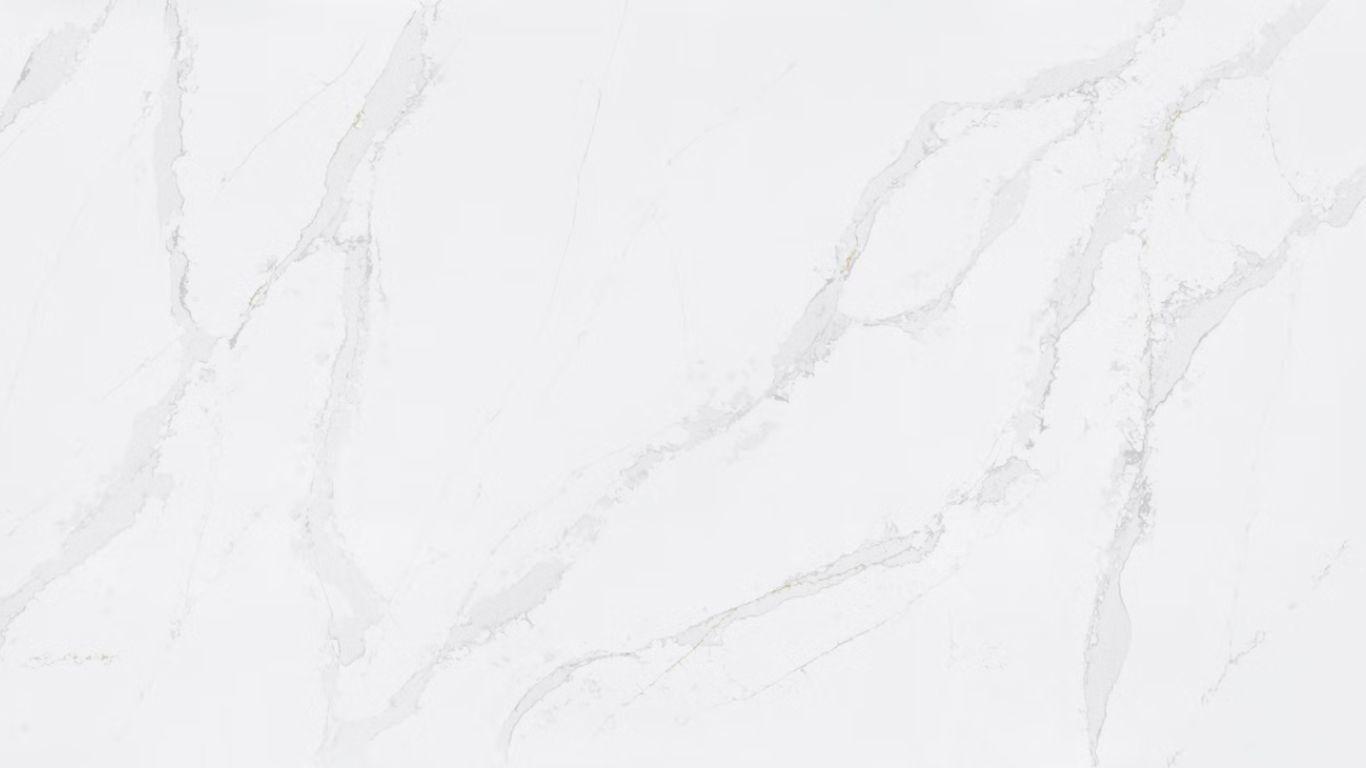
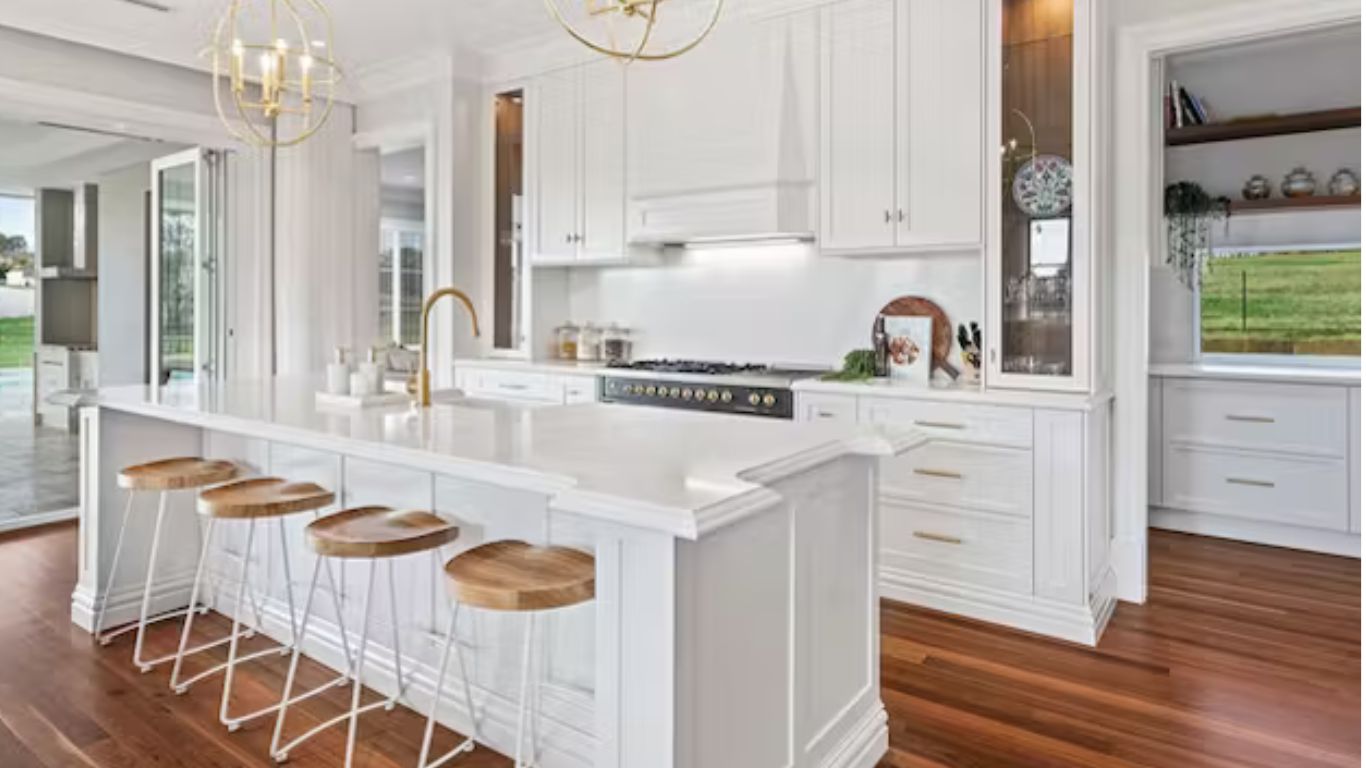
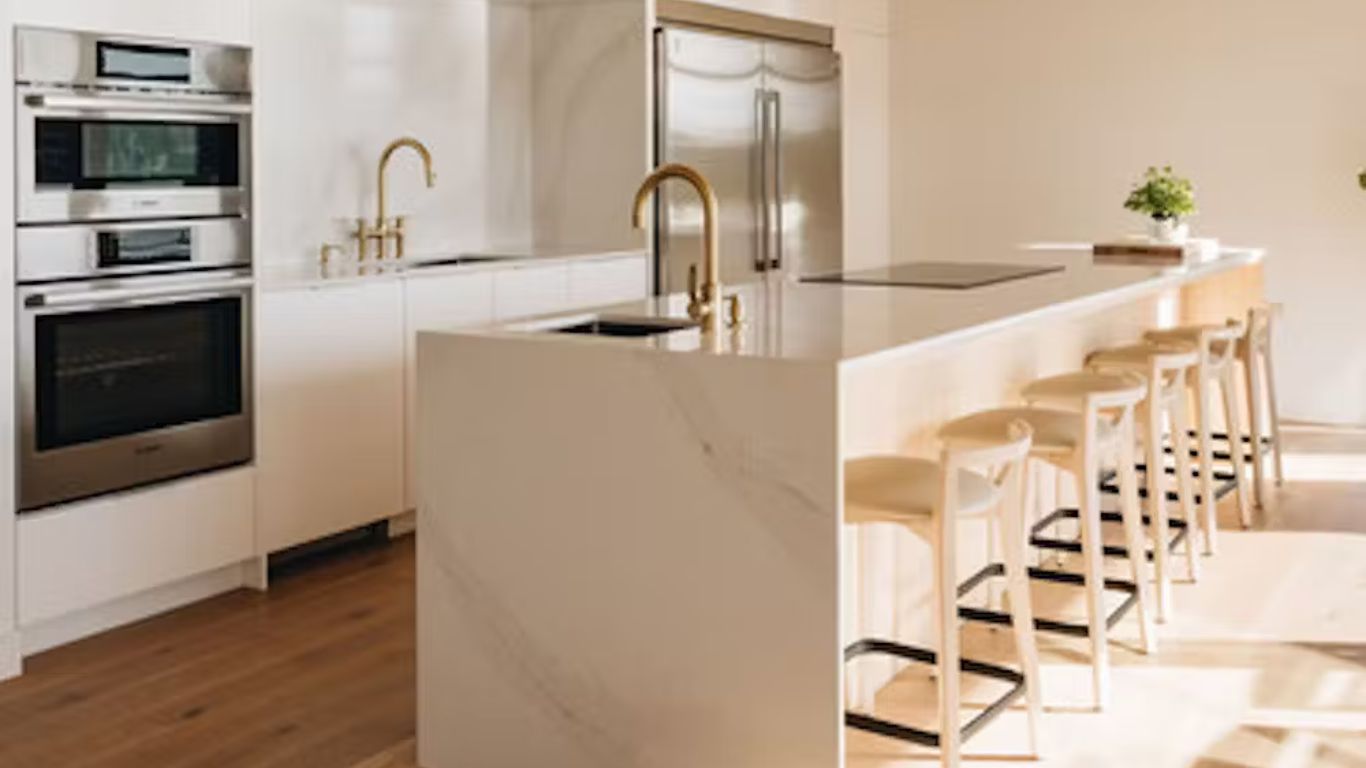
Et Calacatta Gold Silestone by Cosentino
Origin and Manufacturing:
Calacatta Gold Silestone, a masterpiece in countertop design, is crafted by Cosentino, a leading name in the industry. Meticulously manufactured, it embodies the timeless allure of natural stone, celebrated since ancient times for its luxurious aesthetic.
Order countertop sample:
Request free samples from the Cosentino website.
Composition:
This stunning surface primarily comprises quartz, a robust mineral, blended with recycled materials, resins, and adhesives. Cosentino’s commitment to sustainability is evident, with at least 20% recycled glass or other materials incorporated into the HybriQ+ line, which includes Calacatta Gold Silestone.
Appearance:
Silestone Calacatta Gold quartz boasts a radiant white background adorned with wide, elegant grey highlights interspersed with unexpected golden glints. Its distinguished appearance pays homage to the classic beauty of Calacatta marble, making it a natural choice for both classic and modern environments.
Color and Pattern Variability:
This quartz countertop offers a consistent and distinguished appearance. The golden glints and grey highlights are thoughtfully integrated, creating a harmonious and sophisticated look. The color consistency is a testament to its high-grade quality.
Physical Properties:
On the Mohs hardness scale, quartz ranks an impressive 7, surpassing many natural stones. This hardness ensures durability and scratch resistance, making Eternal Calacatta Gold Silestone a long-lasting and reliable choice for your kitchen.
Finish Options:
Et Calacatta Gold Silestone provides versatile finish options to suit your preferences. Choose between the polished finish for vibrant and intense colors or the suede finish for a softer, consistent feel. Each option adds its own unique touch to your countertop, enhancing its visual appeal.
Thickness and Size Variations:
Available in 1.2 cm, 2.0 cm, and 3.0 cm thickness options, the Silestone caters to diverse design preferences. The slabs, offered in jumbo size (327 x 159 cm), provide flexibility for various kitchen layouts and styles.
Maintenance and Care:
Benefiting from its non-porous nature, Calacatta Gold Silestone is resistant to scratches and stains and easy to clean. Unlike natural stones, it does not require sealing, re-sealing, or extensive maintenance. A simple cleaning routine with a nonabrasive sponge and a surface or glass cleaning solution keeps it gleaming.
Elevate your kitchen with the timeless sophistication of Calacatta Gold Silestone—a perfect blend of elegance and functionality that stands the test of time.
Calacatta Leon Gold Quartz: Specifications And Characteristics
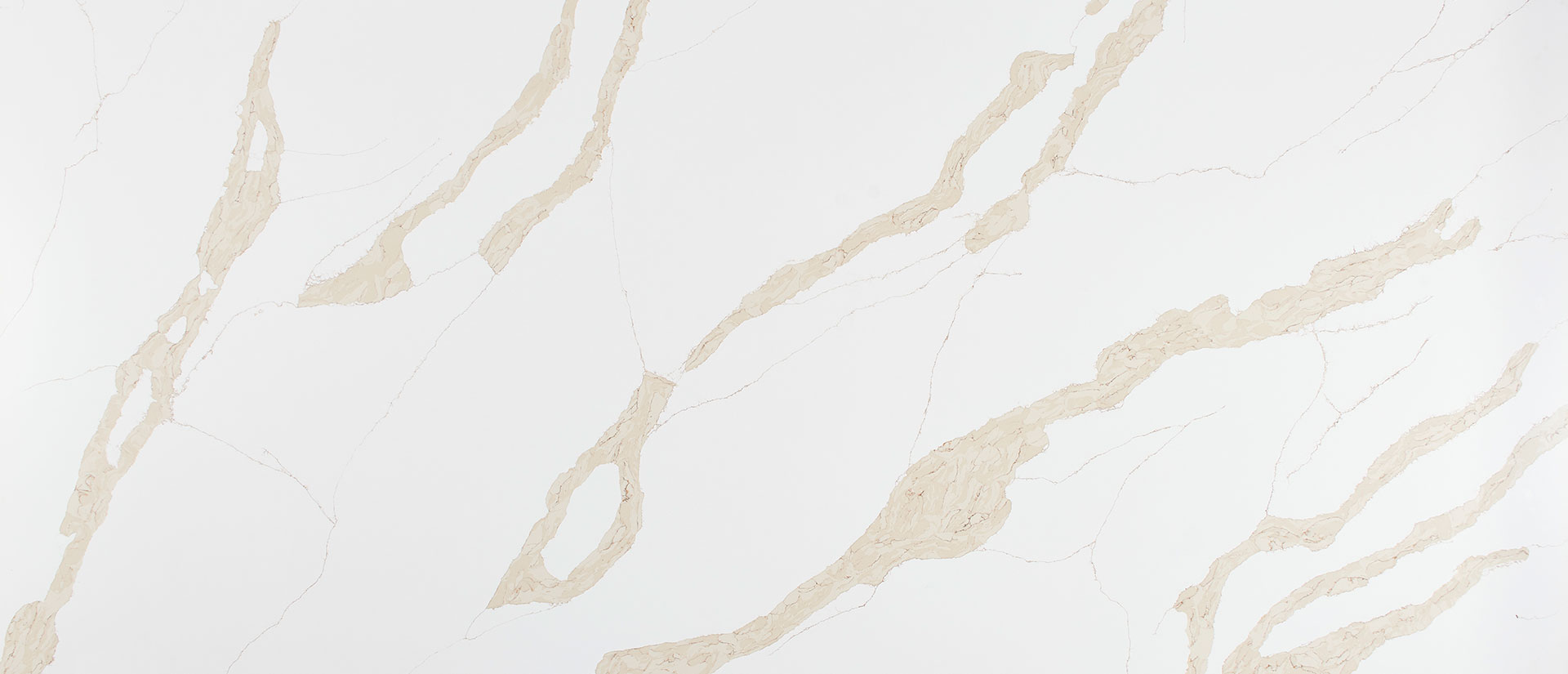
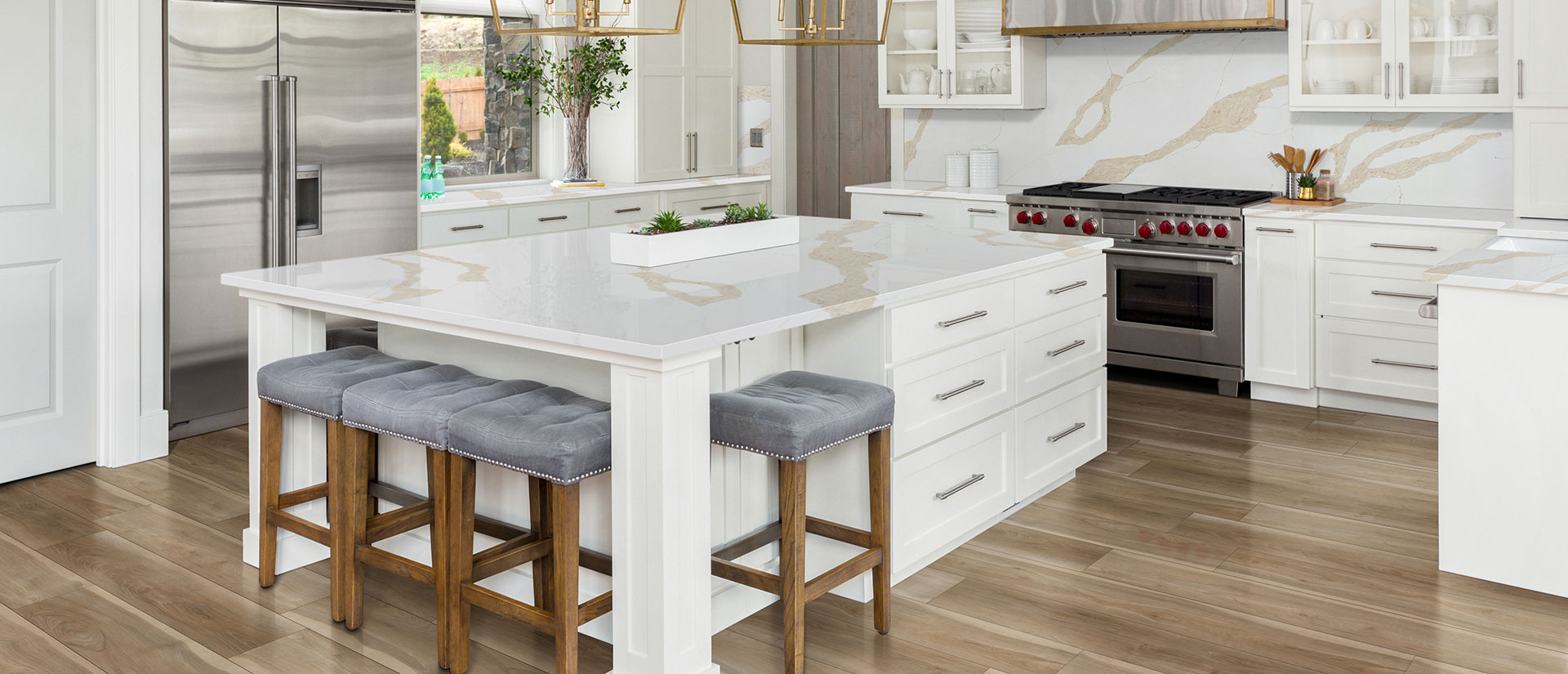
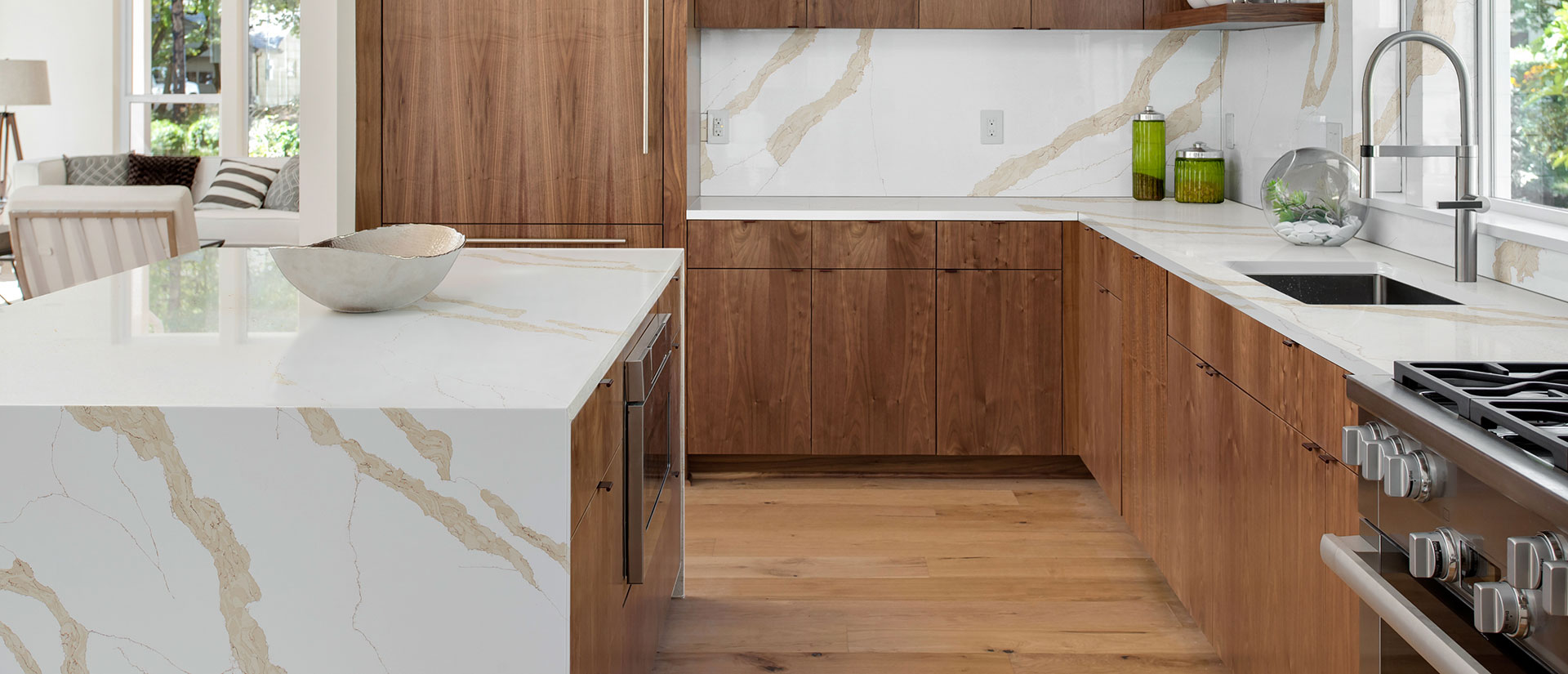
Photos by MSI / Calacatta Leon Gold Quartz
Origin and Manufacturing:
Calacatta Leon Gold Quartz is an engineered stone meticulously crafted in the United States. It’s a product of advanced manufacturing techniques, combining natural aesthetics with industrial resilience.
Order free sample:
You can request free samples for the countertop from the MSI website, or you can locate the closest countertop store location to view the whole slab.
Composition:
This quartz variant is composed of approximately 90-94% crushed natural quartz, one of the hardest minerals on Earth. This is blended with 6-10% polymer resins and pigments, resulting in a highly durable and uniform surface.
Appearance:
The quartz is celebrated for its striking resemblance to natural marble. It boasts a creamy white background accented with subtle veining in shades of taupe and rust. The veining is typically less pronounced than in natural marble, offering a more uniform and controlled pattern.
Color and Pattern Variability:
Unlike natural stone, Calacatta Leon Gold Quartz offers consistency in color and pattern. This means homeowners can expect minimal variation between different slabs, ensuring a cohesive look throughout their space.
Physical Properties:
- Hardness: Exceptionally hard and durable, it resists scratches and chipping, making it ideal for high-traffic areas and heavy-use surfaces.
- Density: Its dense, non-porous nature makes it highly resistant to staining and bacteria growth, promoting a hygienic kitchen environment.
- Heat Resistance: Although capable of withstanding heat, it’s recommended to utilize hot pads or trivets as a precaution to safeguard the surface from direct heat exposure.
Finish Options:
Leon Gold Quartz typically comes in a polished finish, which enhances its natural marble-like appearance and adds a luxurious sheen to the surface.
Thickness and Size Variations:
Available in standard thicknesses of 2 cm and 3 cm, it caters to different design and installation requirements. The slabs come in large sizes, making them suitable for expansive countertops, islands, and backsplashes without numerous seams.
Maintenance and Care:
One of the most appealing aspects of Calacatta Leon Gold Quartz is its low maintenance. It requires no sealing. It is as easy as cleaning with just soap and water. Avoid abrasive cleaners to maintain their sheen and integrity over time.
Use and Design Tips:
Application:
The versatility of Calacatta Leon Gold Quartz extends beyond just countertops. It is also an excellent choice for backsplashes, creating a visually cohesive look with your counters. Its durability makes it suitable for high-traffic areas, such as kitchen floors or commercial settings, where both aesthetics and wear resistance are paramount.
Design Flexibility:
This quartz variety shines in both modern and traditional kitchen settings. Its neutral palette allows it to complement a wide range of cabinetry colors and styles. For a contemporary and bold look, pair it with dark cabinetry – think rich espresso or matte black – which will make the golden veins pop and create a striking contrast. On the other hand, pairing it with classic white cabinets can achieve a seamless and elegant look, perfect for a minimalist or a Scandinavian-style kitchen.
Additional Design Ideas:
Calacatta Leon Gold Quartz also pairs beautifully with wooden accents, bringing warmth to the kitchen. Consider wooden open shelves or a butcher block island to add a cozy, organic feel. For a more opulent touch, brass or gold hardware can amplify the luxury quotient, echoing the quartz’s subtle golden veining.
Calacatta Gold Marble: Specifications and Characteristics
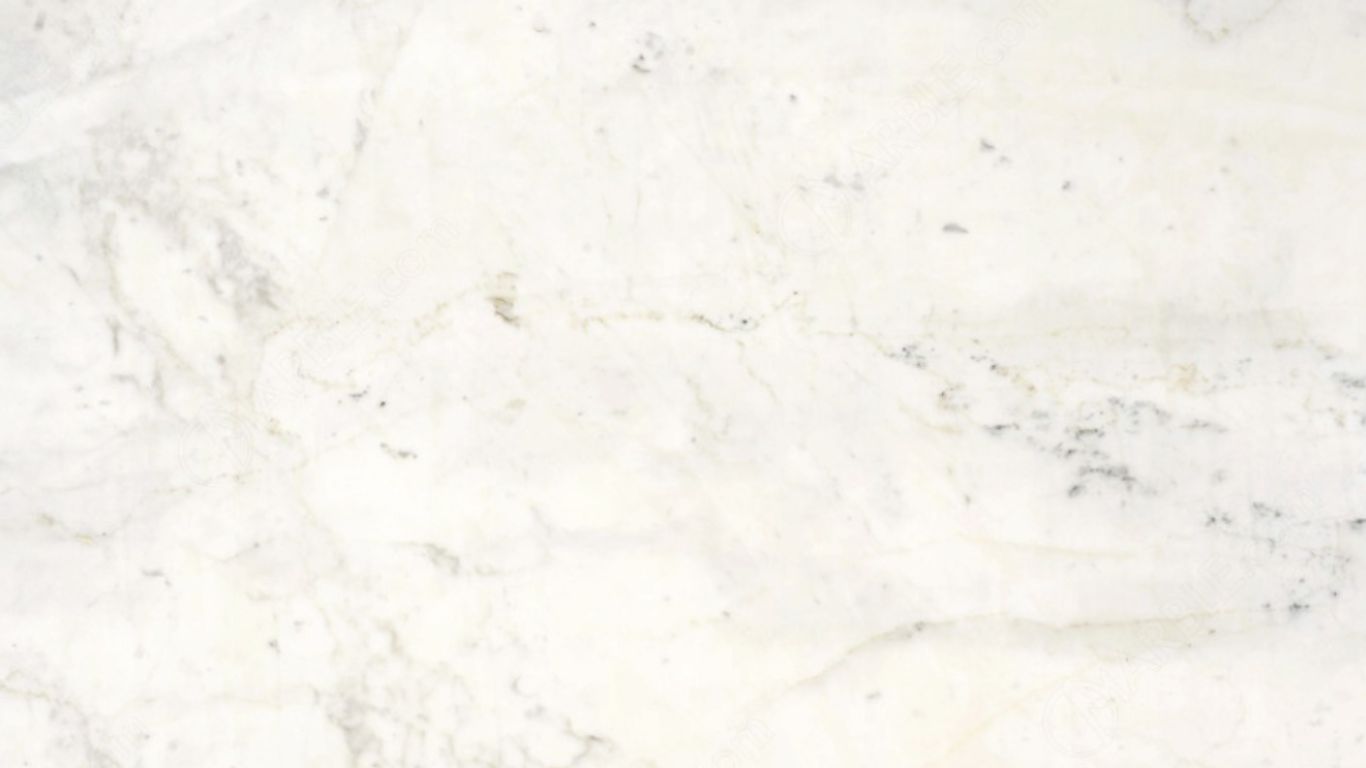
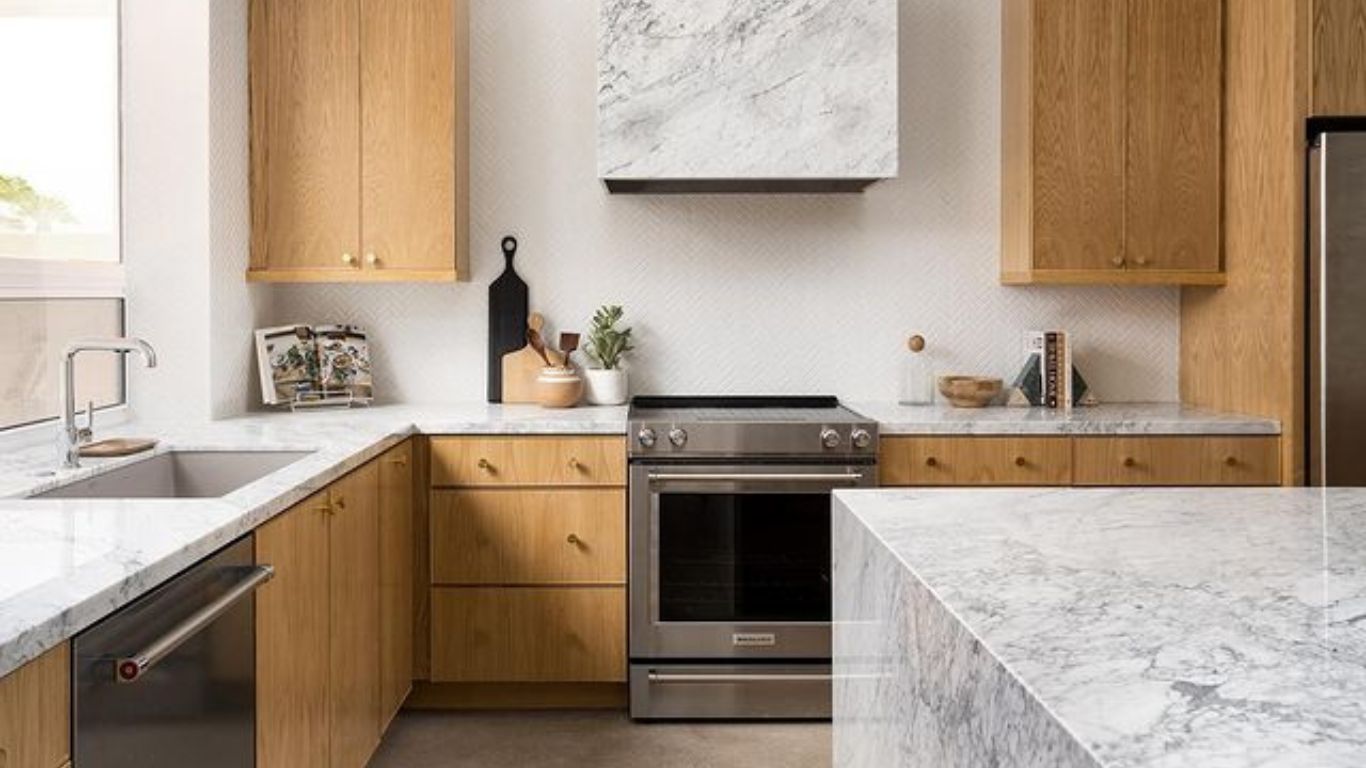
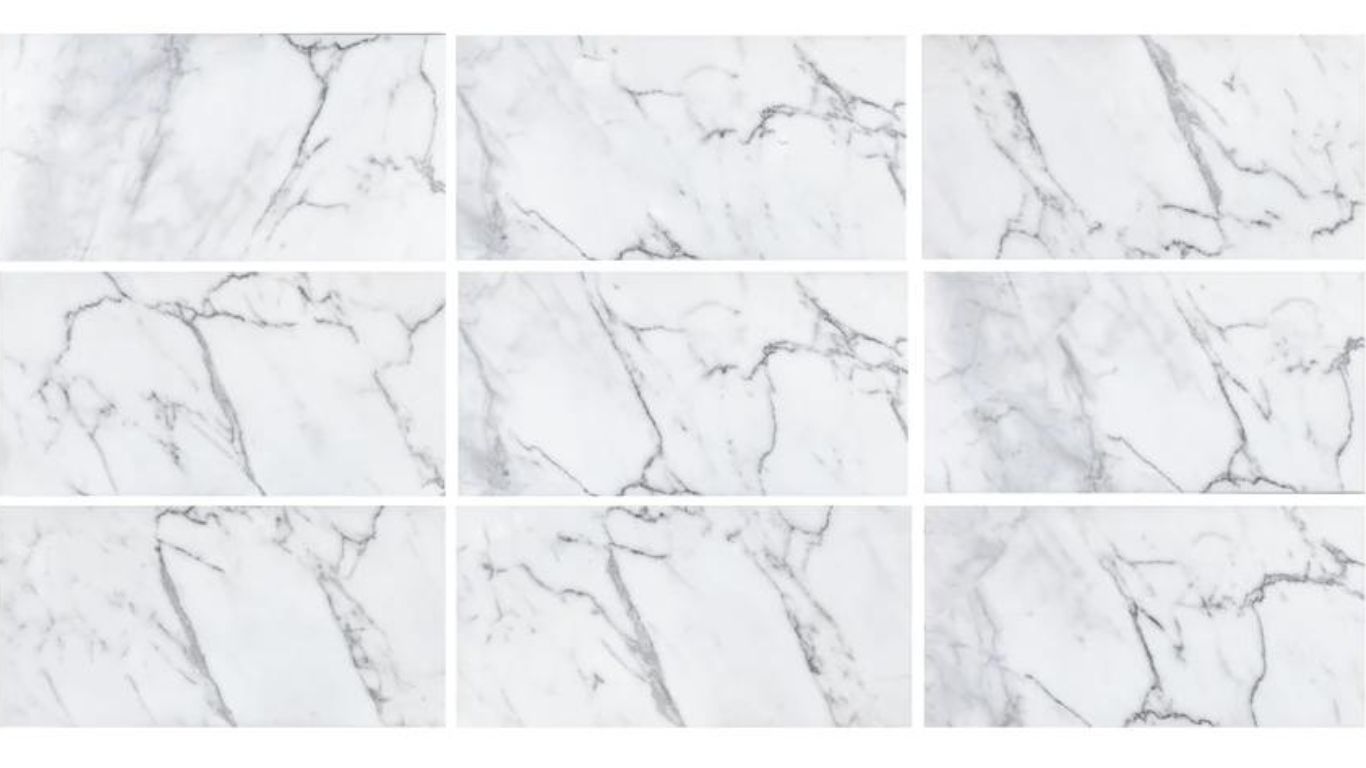
Italian Calacatta Gold Marble
Origin and Authenticity:
Calacatta Gold Marble is a highly prized natural stone quarried in the Carrara region of Italy. Its Italian heritage is synonymous with luxury and timeless elegance, making it a coveted choice for high-end design projects.
Composition:
As a natural stone, Calacatta Gold Marble is composed of calcite, which gives it its characteristic luminosity. The presence of various minerals contributes to its unique veining and coloration.
Appearance:
This marble is renowned for its pristine white background, accentuated with rich gold and gray veining. Each slab is distinct, with its unique pattern and intensity of veins, which adds to its exclusivity and charm.
Color Variability:
Unlike engineered stones, Calacatta Gold Marble is very variable in color and veining. This natural variation means no two slabs are exactly alike, offering a unique and bespoke element to each installation.
Physical Properties:
- Hardness and Durability: While marble is a hard stone, it’s softer than granite and quartz, making it more susceptible to scratching and etching.
- Porosity: Calacatta Gold Marble is porous, which means it can absorb liquids and stain if not properly sealed and maintained.
- Heat Resistance: Marble has good heat resistance, but like all natural stones, it’s best not to place hot pots and pans directly on the surface to prevent damage.
Finish Options:
Calacatta Gold Marble is available in various finishes, with the most popular being polished (for a glossy look) and honed (for a matte appearance). The choice of finish can affect the stone’s susceptibility to stains and scratches.
Thickness and Size Variations:
Typically available in thicknesses ranging from 1 cm to 3 cm, it caters to different design preferences. Slab sizes vary, with larger slabs available for expansive surfaces.
Maintenance and Care:
Regular sealing is recommended to protect its surface from staining. Cleaning should be done with pH-neutral cleaners, and acidic substances should be avoided to prevent etching.
Environmental Impact:
As a natural stone, Calacatta Gold Marble is environmentally friendly, with no chemicals or artificial processes involved in its formation. However, its quarrying and transportation have an environmental footprint.
Availability and Cost:
Due to its rarity and demand, Calacatta Gold Marble is often at a higher price point compared to other natural stones and engineered surfaces. Availability can vary based on quarry production and global demand.
Sensitivity:
As a natural stone, this stone possesses a certain vulnerability that adds to its charm. It is more prone to staining and scratching compared to engineered stones like quartz. This sensitivity requires homeowners to embrace a certain level of care and mindfulness in its maintenance.
Use and Design Tips
Application:
Calacatta marble is not just another countertop material; it’s a centerpiece, a focal point that commands attention. Its dramatic veining and color variations make it ideal for statement-making countertops, luxurious bathroom vanities, and elegant flooring. In commercial spaces, it can transform lobbies and conference rooms into halls of sophistication.
Design Integration:
This marble is at its best when allowed to stand out. In a kitchen, consider pairing it with understated cabinetry that lets the marble’s natural beauty be the star. Minimalistic and monochromatic themes work wonderfully, allowing the gold and gray veins to pop.
Complementary Colors and Textures:
In a space where Calacatta Gold Marble is used, consider incorporating soft gold accents, be it in fixtures, hardware, or decor, to echo its rich veining. Textural contrast can also be introduced using matte finishes or organic materials like wood or metal, creating an interplay of refinement and ruggedness.
Lighting:
Good lighting is crucial to bring out the best in Calacatta Gold Marble. Under-counter LED lights or well-placed pendant lighting can enhance the translucence of the marble, highlighting the depth and color of its veins.
Conclusion:
Calacatta Gold comes in 3 distinct forms – the Et Calacatta Gold Silestone, the consistent and durable Calacatta Leon Gold Quartz, and the uniquely elegant Calacatta Gold Marble. Each offers its own brand of beauty and functionality, catering to different lifestyles and aesthetic preferences. Whether you lean towards the engineered perfection of quartz or the natural allure of marble, your choice of stone will be a testament to your taste and an investment in your home’s beauty.
Choose wisely, and let your countertops tell your home’s story!
